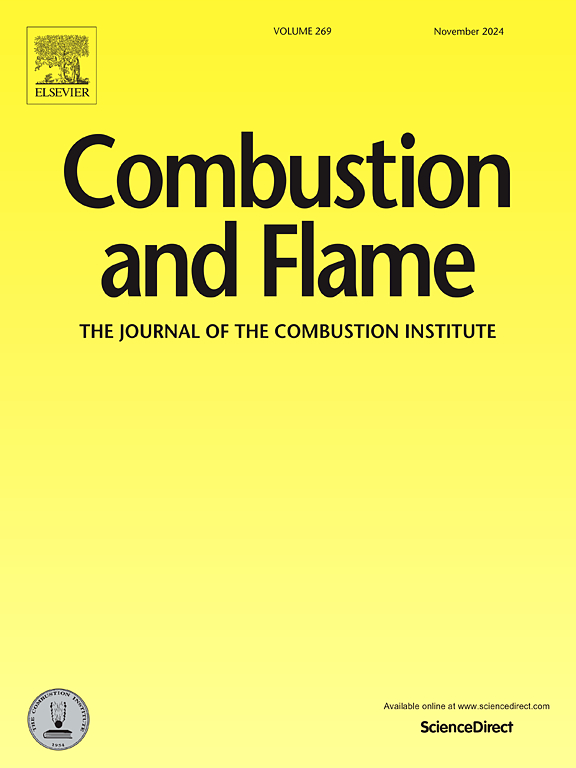Time-resolved measurements of OH during auto-ignition of syngas with trimethylsilanol and hexamethyldisiloxane
IF 5.8
2区 工程技术
Q2 ENERGY & FUELS
引用次数: 0
Abstract
The effects of trimethylsilanol (TMSO) and hexamethyldisiloxane (HMDSO) addition on OH time histories during syngas (H2 and CO) ignition were investigated using the University of Michigan rapid compression facility. Experiments spanned temperatures of 1010–1080 K, at a pressure of approximately 5 atm. Syngas mixtures of 1.2 % H2/2.8 % CO/20 % O2 by volume (balance N2 and Ar) provided a baseline for comparison with mixtures that included 100, 200, and 1000 ppm of the TMSO and 100 ppm of HMDSO. Narrow-line ultraviolet laser-absorption was used to measure OH mole-fraction during ignition. The addition of TMSO and HMDSO significantly shifted the OH time-histories earlier in time, by up to 51 %, compared with the baseline syngas mixture. The value of the maximum OH mole fraction was consistent between the 100 and 200 ppm TMSO mixtures and the 100 ppm HMDSO mixtures, but the maximum OH increased significantly with the 1000 ppm TMSO mixtures. The OH data indicate TMSO and HMDSO were not direct sources of OH radicals. Analysis further indicates the TMSO and HMDSO decompose rapidly followed by reactions that enhance the production of H atoms, and the increased reactivity observed is via the H + O2 = OH + O reaction.
求助全文
约1分钟内获得全文
求助全文
来源期刊

Combustion and Flame
工程技术-工程:化工
CiteScore
9.50
自引率
20.50%
发文量
631
审稿时长
3.8 months
期刊介绍:
The mission of the journal is to publish high quality work from experimental, theoretical, and computational investigations on the fundamentals of combustion phenomena and closely allied matters. While submissions in all pertinent areas are welcomed, past and recent focus of the journal has been on:
Development and validation of reaction kinetics, reduction of reaction mechanisms and modeling of combustion systems, including:
Conventional, alternative and surrogate fuels;
Pollutants;
Particulate and aerosol formation and abatement;
Heterogeneous processes.
Experimental, theoretical, and computational studies of laminar and turbulent combustion phenomena, including:
Premixed and non-premixed flames;
Ignition and extinction phenomena;
Flame propagation;
Flame structure;
Instabilities and swirl;
Flame spread;
Multi-phase reactants.
Advances in diagnostic and computational methods in combustion, including:
Measurement and simulation of scalar and vector properties;
Novel techniques;
State-of-the art applications.
Fundamental investigations of combustion technologies and systems, including:
Internal combustion engines;
Gas turbines;
Small- and large-scale stationary combustion and power generation;
Catalytic combustion;
Combustion synthesis;
Combustion under extreme conditions;
New concepts.
 求助内容:
求助内容: 应助结果提醒方式:
应助结果提醒方式:


